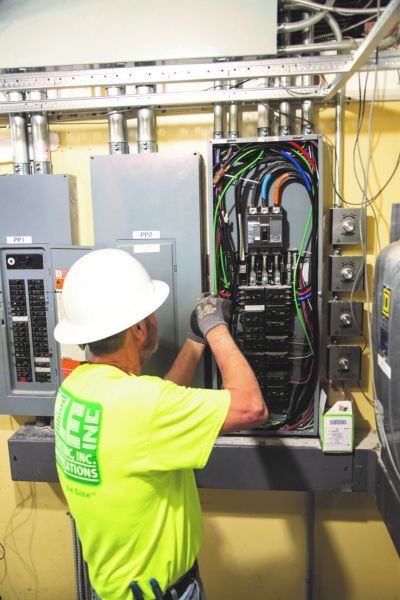
March 10, 2025
GFI vs. GCFI: Understanding the Key Differences
When it comes to electrical safety, both Ground Fault Interrupters (GFI) and Ground Circuit Fault Interrupters (GCFI) play a crucial role in preventing electrical hazards. However, the terms are often used interchangeably, leading to confusion. In this blog, we'll break down the differences and help you understand which one is best suited for your needs.
What is a GFI?
A Ground Fault Interrupter (GFI) is a device designed to protect people from electrical shock by shutting off power when it detects a ground fault. A ground fault occurs when electricity takes an unintended path to the ground, often through a person. GFIs monitor the electrical current and quickly cut off power if an imbalance is detected.
Key Features of GFI:
- Detects ground faults and interrupts power to prevent electrocution.
- Commonly found in kitchens, bathrooms, and outdoor electrical outlets where water exposure is high.
- Can be installed in an outlet or as a GFCI circuit breaker in the electrical panel.
- Typically required by the National Electrical Code (NEC) in wet and damp locations.
What is a GCFI?
A Ground Circuit Fault Interrupter (GCFI) is essentially another name for a GFI. The term "GCFI" is sometimes mistakenly used, but the correct terminology is Ground Fault Circuit Interrupter (GFCI). GFCI outlets serve the same function as GFIs, detecting electrical imbalances and shutting down power to prevent shock hazards.
GFI vs. GFCI: Is There a Difference?
While some may think GFI vs. GFCI are different devices, they actually refer to the same technology. The only distinction is in the terminology:
- GFI (Ground Fault Interrupter) is a general term for devices that protect against electrical shocks.
- GFCI (Ground Fault Circuit Interrupter) is the technical term used in electrical codes and product labeling.
Both devices operate in the same manner and provide the same level of protection. Whether labeled GFI or GFCI, they serve the same purpose of preventing ground faults that could lead to electrocution.
Where to Use GFCI/GFI Outlets
Due to the risks of electrical hazards in certain environments, the National Electrical Code mandates GFCI protection in specific areas, including:
- Bathrooms – To prevent shocks from water exposure.
- Kitchens – Particularly near sinks and countertops.
- Garages and Basements – To protect against electrical faults in high-humidity areas.
- Outdoor Areas – Since weather exposure increases the risk of electrical hazards.
- Laundry Rooms – Near washing machines or utility sinks.
15 Amp vs. 20 Amp Outlets
When installing electrical outlets, it's important to consider the difference between a 15 amp outlet and a 20 amp outlet. A 20 amp outlet is typically used for appliances that require more power, such as a manual transfer switch for generators. Understanding the electrical needs of your devices will help ensure a safe and efficient setup.
Conclusion
If you’ve been wondering whether to install a GFI or a GFCI, the answer is simple: they are the same device. No matter the label, their function remains unchanged—providing vital protection against electrical shocks and reducing the risk of severe injury or death. Ensuring that your home is equipped with properly installed and tested GFCI outlets is a critical step in maintaining electrical safety.
Have you checked your GFCI outlets lately? Make sure to test them monthly to ensure they’re functioning properly and keeping you safe!
Contact Lynn Electric today!





